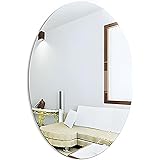Introduction
Batting cage netting is an essential component for any baseball or softball player aiming to improve their hitting skills in a controlled environment. The right netting can make a huge difference in training efficiency, safety, and durability. In this guide, we’ll go over everything you need to know about batting cage netting—from materials and types to setup and maintenance.
What Is Batting Cage Netting?
Batting cage netting is a specialized net used to enclose a batting area, allowing players to hit balls freely while containing them within a designated space. This netting is made to withstand impact, protecting the surrounding area and ensuring a safe practice environment.
Why Batting Cage Netting is Important in Baseball and Softball Training
Batting cage netting enables players to practice hitting in a secure space, keeping balls from flying outside the designated area. This not only protects players, coaches, and bystanders but also makes training sessions more efficient by reducing time spent retrieving balls.
Types of Batting Cage Netting
Batting cage netting comes in various types, each suited to different needs and preferences.
Knotted vs. Knotless Netting
Knotted netting is typically stronger and more durable, making it ideal for high-impact practice. Knotless netting, on the other hand, has a smoother surface, reducing wear on the ball and providing a more uniform appearance.
Polyethylene Netting
Polyethylene is a popular choice for outdoor batting cages due to its weather-resistant properties, especially when UV-treated. It’s highly durable and can handle prolonged sun exposure without degrading.
Nylon Netting
Nylon is known for its strength and flexibility, making it suitable for both indoor and outdoor use. However, untreated nylon can degrade under UV rays, so it’s best for indoor or shaded outdoor areas unless UV-treated.
UV-Treated Netting
UV-treated netting is specifically designed to withstand sun exposure. This makes it ideal for outdoor batting cages, as it maintains its integrity and strength longer than untreated materials.
Choosing the Right Material for Batting Cage Netting
The material you choose for batting cage netting will significantly impact its durability, cost, and suitability for different environments. Polyethylene is excellent for outdoor use, while nylon provides strength and flexibility for both indoor and outdoor cages.
Mesh Size and Thickness in Batting Cage Netting
Mesh size and thickness determine how well the net can absorb impacts and protect the area. Smaller mesh sizes (around 1-2 inches) are ideal for baseballs and softballs, while thicker netting (typically measured in mm or twine thickness) provides greater durability and resistance to tears.
Indoor vs. Outdoor Batting Cage Netting
Indoor batting cage netting can be made from a wider range of materials since it doesn’t need to withstand weather conditions. Outdoor netting, however, should be weather-resistant and UV-treated to ensure it holds up under sun, wind, and rain.
Benefits of Using Quality Batting Cage Netting
Using high-quality netting provides a safer, more reliable training environment. Quality netting withstands high-impact hits, requires fewer repairs, and generally lasts longer, making it a worthwhile investment for anyone serious about training.
How to Select the Right Size for Batting Cage Netting
Batting cage netting size depends on your available space and training needs. Standard batting cages are typically 40-70 feet long, 10-14 feet wide, and around 10 feet high, though custom sizes are available for specific requirements.
Installation Tips for Batting Cage Netting
Proper installation ensures your batting cage netting remains secure and stable. Here are a few tips:
Use a sturdy frame to support the netting.
Ensure the net is taut and secured at multiple points.
For outdoor setups, secure the net to the ground with stakes or anchors to prevent movement in windy conditions.
Maintenance Tips to Increase the Lifespan of Batting Cage Netting
Regular maintenance can extend the lifespan of batting cage netting. Check for any signs of wear, fraying, or tears after each use, especially around high-impact areas. For outdoor netting, store it indoors during extreme weather, and periodically wash the net to remove dirt and debris.
Popular Brands in Batting Cage Netting
Several brands are recognized for their high-quality batting cage netting. Popular options include:
JUGS Sports – Known for durable and reliable netting options.
Bownet – Offers both portable and heavy-duty netting solutions.
Cimarron Sports – Provides a variety of netting options for different budgets and needs.
Cost Considerations When Buying Batting Cage Netting
The cost of batting cage netting can vary widely based on size, material, and brand. Nylon netting tends to be more expensive than polyethylene but offers additional durability. Be sure to balance quality and budget based on your training frequency and environment.
DIY Batting Cage Netting: Pros and Cons
Building a DIY batting cage netting setup can be cost-effective but comes with its own challenges. While it may save money upfront, DIY options may not offer the same durability and safety as professionally manufactured nets. Consider your skill level and budget before opting for a DIY setup.
Conclusion
Batting cage netting is an essential component for anyone serious about baseball or softball training. With the right netting, you can create a safe, efficient, and enjoyable practice environment. By choosing quality materials, maintaining your net, and following proper installation guidelines, you can get the most out of your batting cage netting.
SR Square Toothbrush Holder Multipurpose Storage Holder Cover Organizer for Bathroom Traveling, Camping, Business Trip and School Use (Pack of 1) (Multi Color)
₹99.00 (as of 22 December, 2024 11:23 GMT +05:30 - More infoProduct prices and availability are accurate as of the date/time indicated and are subject to change. Any price and availability information displayed on [relevant Amazon Site(s), as applicable] at the time of purchase will apply to the purchase of this product.)Lifesto Oval Shape Adhesive Mirror Sticker for Wall on Tiles Bedroom Living Room Basin Mirror Bathroom Wall Mirror Both Side Sticker Unbreakable Plastic Wall Mirrors (1)
₹149.00 (as of 22 December, 2024 11:23 GMT +05:30 - More infoProduct prices and availability are accurate as of the date/time indicated and are subject to change. Any price and availability information displayed on [relevant Amazon Site(s), as applicable] at the time of purchase will apply to the purchase of this product.)Milton Thermosteel Flip Lid Flask, 1000 milliliters, Silver
₹964.00 (as of 22 December, 2024 11:23 GMT +05:30 - More infoProduct prices and availability are accurate as of the date/time indicated and are subject to change. Any price and availability information displayed on [relevant Amazon Site(s), as applicable] at the time of purchase will apply to the purchase of this product.)Gas Lighter for Kitchen Use | C-Type Rechargeable Candle Lighter | Electric Lighter | Christmas Lighter for Gas Stove with USB Charging Port | 1 Year Warranty | 400 Uses in Single Charge
₹261.00 (as of 22 December, 2024 11:23 GMT +05:30 - More infoProduct prices and availability are accurate as of the date/time indicated and are subject to change. Any price and availability information displayed on [relevant Amazon Site(s), as applicable] at the time of purchase will apply to the purchase of this product.)MILTON Aura 1000 Thermosteel Bottle, 1050 ml Water Bottles, 24 Hours Hot and Cold, Easy to Carry, Easy Grip, Rust Proof, Tea, Coffee, Office, Travel Bottle, Black
₹932.00 (as of 22 December, 2024 11:23 GMT +05:30 - More infoProduct prices and availability are accurate as of the date/time indicated and are subject to change. Any price and availability information displayed on [relevant Amazon Site(s), as applicable] at the time of purchase will apply to the purchase of this product.)Discover more from The General Post
Subscribe to get the latest posts sent to your email.





